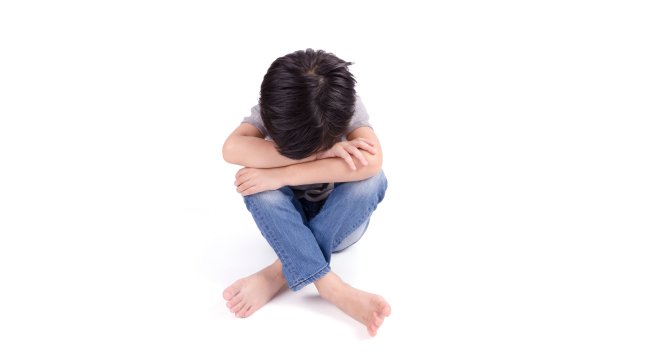Earlier this month, a 34-year-old mother was arrested for running away after strangling her 6-year-old son to death in Cheongju, North Chungcheong Province. During her tearful meeting with the police, she confessed to committing the crime out of anger, as her husband had recently left her following a series of fights over child care. She had been on medication for severe postpartum depression.
“The initial plan was to kill myself,” the mother told the police. “But I was afraid that my son would lead a miserable life without his mom. I was going to commit suicide after ending his life, but I became scared (to end my own life) after he died.”
The tragedy is just one of the dramatically increasing number of child abuse cases in South Korea. According to the latest data released by the Welfare Ministry on Thursday, the number of child abuse cases increased by 50 percent in 2014 from the year before, with more than 80 percent of the abusers being parents.
 |
The number of child abuse cases increased by 50 percent in Korea in 2014 from the year before, with more than 80 percent of the abusers being parents. (123RF) |
This means 1.10 in every 1,000 Korean children was abused at least once last year, while only 0.73 in every 1,000 children experienced the same in 2013. Last year alone, 15,025 suspected cases were reported. Among them, 10,027 were confirmed as child abuse violations.
The study showed that the largest number of cases, or 48 percent, involved more than one type of abuse, including physical abuse. The second most common type of abuse at 18.6 percent was child neglect, which is a pattern of failing to provide for a child’s basic needs -- including food, hygiene and clothing. About 15 percent of the cases involved emotional abuse, while 14.5 percent consisted of physical violence.
Among the 10,027 confirmed abusers, 8,207 were the victims’ parents. The largest number of cases, 33 percent, were caused by the parents’ “lack of knowledge and skills in child care,” such as not being able to differentiate abuse and discipline.
Twenty percent of the cases were triggered by the parents’ social isolation, as well as their stress stemming from financial difficulties. Ten percent of the abusers had conflicts with either their spouse or other family members. Also, the majority of the abusers, 32.4 percent, were unemployed.
“Child abuse cases has been hard to crack down because it happens behind closed doors in the ‘private’ sphere,” said Lee Tae-ho from the National Child Protection Agency.
“It is still viewed by many (Koreans) as a private family matter that need not involve the criminal justice system.”
One of the child abuse victims Lee encountered had bruises all over her body when she was reported by her school teacher. Trying to hide her scars and bruises, the middle school student would always wear thick, black tights even in summer. Her parents would hit her whenever she didn’t meet her curfew, or did not dress “appropriately” for her age.
When Lee visited the victim’s home to speak with her parents, they told him, “Who do you think you are to interfere with our private lives? We disciplined her because she’s ours and we love her so much. What more do you need?”
Her father also told Lee that he, too, had been “disciplined” the same way by his parents when he was a child, and that he didn’t think ”there was anything wrong” with it.
“There is still a general perception (in Korea) that a parent knows about his or her child the best, and that children are possessions or properties of their parents (rather than independent beings),” Lee said. “Korean culture (which emphasizes hierarchy and respect for the elders), has long favored parental rights over children’s rights.
“The number of child abuse cases are increasing partly because more people are acknowledging what it is and report whenever they witness the victims or abusers.”
Among the 10,027 young Korean victims, 14.6 percent of them were infants aged 0-3. The report by the Health Ministry said being exposed to abuse during the first four years of one’s life can be particularly dangerous, and it can severely damage a child’s social development and leave lifelong psychological scars. Abusive or neglectful behavior toward infants include limited physical contact with the child -- such as no kisses or hugs or other signs of affection -- and failing to bathe or feed the baby regularly.
“As abused children cannot express emotions safely, adult survivors of this abuse can struggle with anger and have a difficulty maintaining relationships,” the report said.
“It is necessary to make it mandatory for all parents with young infants to receive education on parenting, and for all medical institutions and health care workers to check for signs of child abuse when they receive children patients for regular health check-ups.”
Overseas studies have long shown that personal stress influences a parent’s behavior toward their children. Parents who are financially struggling or having marriage stress have a higher chance of abusing -- or neglecting -- their children, according to a 1991 study by Michigan State University.
Along with stress, social isolation of a parent because of having to raise a child alone has also been linked to child abuse and neglect, according to a 2002 report by the World Health Organization.
Lee from the National Child Protection Agency said family preservation and therapy for both abusers and victims are as important as seeking justice for the damage done to children. “The issue cannot be stopped by just punishing the abusers,” he said. “In the long term, the government should make efforts to eliminate risk factors for child abuse, such as parental stress or financial difficulties. Welfare programs as well as psychological therapy are both needed in order to establish this.”
By Claire Lee (
dyc@heraldcorp.com)








![[Today’s K-pop] Blackpink’s Jennie, Lisa invited to Coachella as solo acts](http://res.heraldm.com/phpwas/restmb_idxmake.php?idx=644&simg=/content/image/2024/11/21/20241121050099_0.jpg)